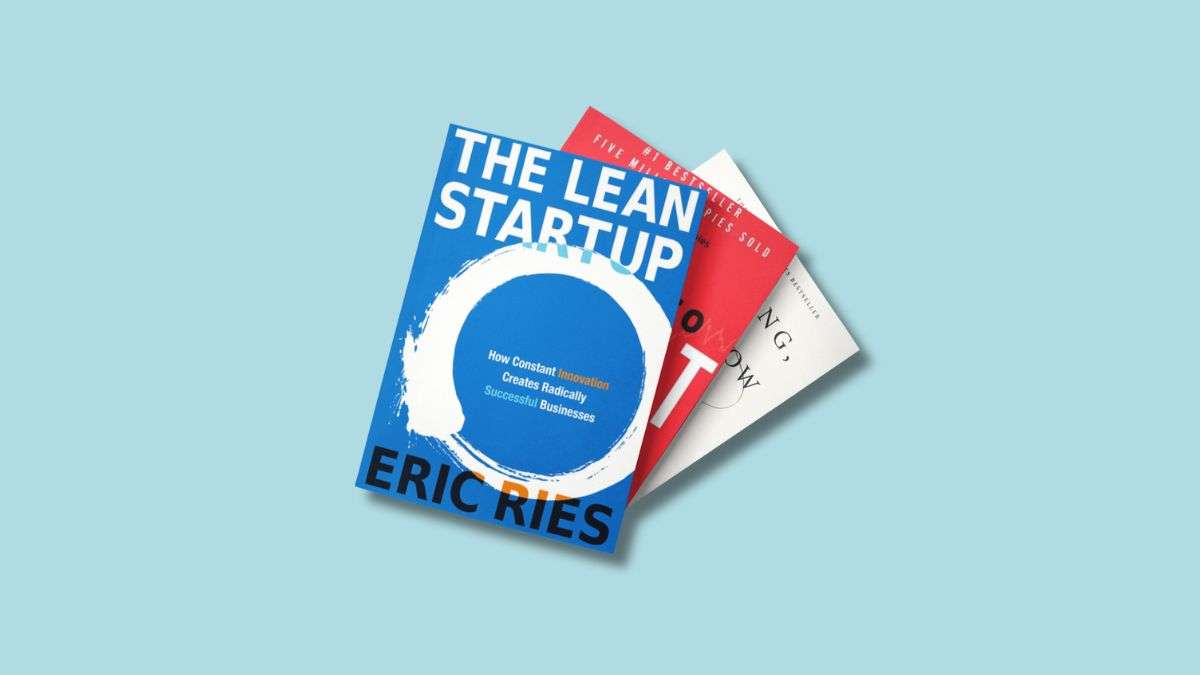Table of Contents
- Introduction
- 1. The Lean Startup
- 2. Good to Great
- 3. Thinking, Fast and Slow
- 4. Start with Why
- 5. The Innovator’s Dilemma
- 6. How to Win Friends and Influence People
- 7. Originals
- 8. The 7 Habits of Highly Effective People
- Conclusion
Introduction
In today’s fast-paced business world, continuous learning and self-improvement are essential for staying ahead of the curve. Reading business books is one of the most effective ways to gain valuable insights, strategies, and inspiration for personal and professional growth. The write-up explores the eight best books on business that can help you propel your ventures dramatically.
By exploring the experiences and wisdom of successful entrepreneurs, thought leaders, and industry experts, you can expand your knowledge, challenge your assumptions, and discover new approaches to tackle business challenges. Whether you’re an aspiring entrepreneur, a seasoned executive, or simply looking to enhance your career prospects, reading business books can provide many benefits.
The lessons gleaned from these books can be transformative, from developing leadership skills and improving decision-making to fostering innovation and building stronger relationships. So, let’s dive into eight must-read business books that have the potential to revolutionize your thinking and propel your growth.
1. The Lean Startup
The Lean Startup by Eric Ries has become a go-to resource for entrepreneurs looking to build successful ventures in an age of uncertainty. The book introduces the concept of the “lean startup” methodology, which emphasizes rapid experimentation, customer feedback, and iterative product development.
Ries argues that traditional business planning often leads to wasted resources and missed opportunities as assumptions go untested and market needs evolve. Instead, he advocates for a more agile approach, where startups validate their ideas through minimum viable products (MVPs) and pivot based on real-world data.
By embracing the lean startup principles, entrepreneurs can reduce risk, conserve resources, and adapt quickly to changing market conditions. The book provides practical tools and techniques for implementing this methodology, such as the build-measure-learn feedback loop and the use of innovation accounting to track progress.
2. Good to Great
In Good to Great, Jim Collins and his research team explore what differentiates exceptional companies from their merely good counterparts. Through rigorous analysis and case studies, Collins identifies key characteristics that enable companies to leap from good to great.
One of the central concepts in the book is the “Level 5 Leadership,” which describes leaders who possess a unique blend of humility and unwavering resolve. These leaders prioritize the success of their organizations over personal ego and are relentless in their pursuit of long-term greatness.
Collins also introduces the “Hedgehog Concept,” urging companies to focus on the intersection of what they can be the best at in the world, what drives their economic engine, and what they are deeply passionate about. Companies can achieve sustained success by aligning their efforts around this core focus.
Other insights include getting the right people on the bus, confronting brutal facts while maintaining faith, and using technology as an accelerator rather than a momentum creator.
3. Thinking, Fast and Slow
Nobel Prize-winning psychologist Daniel Kahneman explores the dual systems of thinking that shape our judgments and decisions in Thinking, Fast and Slow. He distinguishes between System 1, fast, intuitive, and emotional, and System 2, slower, deliberate, and logical.
Kahneman argues that while System 1 thinking is essential for navigating daily life, it is also prone to cognitive biases and heuristics that can lead to flawed decision-making. Through a series of compelling examples and experiments, he demonstrates how these biases, such as the anchoring effect, the availability heuristic, and the sunk cost fallacy, can influence our judgments in business and beyond.
Kahneman also explores the concept of “WYSIATI” (what you see is all there is), highlighting how our minds tend to jump to conclusions based on limited information. By understanding these cognitive tendencies, business leaders can develop strategies to mitigate their impact and make more rational, evidence-based decisions.
Thinking, Fast and Slow offers a fascinating glimpse into the complexities of the human mind and provides valuable insights for anyone seeking to improve their decision-making skills.
4. Start with Why
Start with Why, written by Simon Sinek, challenges traditional assumptions about what drives success in business and leadership. He argues that the most influential and inspiring leaders start by asking “why” their organization exists and why anyone should care.
Sinek introduces the concept of the “Golden Circle,” which places “why” at the center, surrounded by “how” and “what.” He contends that while most companies focus on what they do and how they do it, genuinely exceptional organizations start with a clear sense of purpose and belief. By first communicating their “why,” these organizations can attract loyal customers, inspire their employees, and create a lasting impact.
Sinek draws on examples from Apple, Martin Luther King Jr., and the Wright brothers to illustrate how starting with “why” can lead to innovation, trust, and loyalty. He also explores the biological basis for this approach, discussing how the limbic system in our brains responds to messages that resonate with our beliefs and values.
By starting with “why,” leaders can tap into this powerful emotional connection and inspire others to action.
5. The Innovator’s Dilemma
Authored by Harvard professor Clayton Christensen, The Innovator’s Dilemma explores why established companies struggle to adapt to disruptive innovations, even when they appear to be doing everything right. He argues that the very practices that enable companies to succeed in sustaining innovation can hinder their ability to embrace disruptive technologies and business models.
Christensen introduces the concept of “disruptive innovation,” which describes how new entrants can challenge incumbent firms by offering simpler, more affordable, or more convenient alternatives. These disruptive innovations often target overlooked or underserved market segments, gradually improving performance until they compete with mainstream offerings.
Christensen provides numerous case studies, from the disk drive industry to excavators, illustrating how disruptive innovations can upend established markets. He also offers strategies for how companies can navigate the innovator’s dilemma, such as setting up separate organizations to pursue disruptive opportunities and being willing to cannibalize their products. The Innovator’s Dilemma has become a seminal work in innovation and has shaped the thinking of business leaders and entrepreneurs worldwide.
6. How to Win Friends and Influence People
How to Win Friends and Influence People is a classic bestselling book by Dale Carnegie that offers timeless advice on building strong interpersonal relationships and becoming a more effective communicator. First published in 1936, the book has remained a bestseller for decades, a testament to the enduring relevance of its insights.

Carnegie emphasizes the importance of understanding and empathizing with others, arguing that focusing on their needs and perspectives is the key to influence. He provides practical techniques for handling people, such as giving sincere appreciation, avoiding criticism, and encouraging others to talk about themselves.
Carnegie also stresses the power of active listening, showing genuine interest, and making the other person feel important. These principles can be applied in various business contexts, from sales and negotiations to team leadership and conflict resolution.
By mastering the art of human relations, business professionals can build trust, foster collaboration, and achieve better outcomes in their interactions with clients, colleagues, and stakeholders. How to Win Friends and Influence People remains an essential guide for anyone seeking to improve their interpersonal skills and succeed in business.
7. Originals
In Originals, Adam Grant explores how individuals can champion new ideas and drive change within organizations and society. Drawing on research from psychology, business, and social science, he challenges common assumptions about what it takes to be a successful innovator.
Grant argues that original thinkers are not necessarily the boldest or most confident individuals but rather those willing to question the status quo, take calculated risks, and persist in the face of setbacks. He provides strategies for generating and recognizing good ideas, such as embracing curiosity, seeking diverse perspectives, and strategically procrastinating.
Grant also discusses how to build coalitions of support for new ideas, navigate the political landscape of organizations, and overcome resistance to change. He offers insights on how leaders can create a culture that values and nurtures originality, such as encouraging dissent, tolerating failure, and providing psychological safety.
Throughout the book, Grant weaves in compelling stories of original thinkers, from entrepreneurs and activists to scientists and artists, illustrating the principles in action. Originals provides a fresh perspective on innovation and offers practical advice for anyone seeking to make a meaningful impact in their field.
8. The 7 Habits of Highly Effective People
The 7 Habits of Highly Effective People by respected author Stephen Covey presents a holistic personal and professional development approach. The book has become a classic in the self-help genre, offering a framework for living a moral, fulfilling life.
Covey argues that true effectiveness comes from aligning one’s values and actions. He presents seven habits that can help individuals achieve this alignment. The habits are divided into three categories: private victory (self-mastery), public victory (working effectively with others), and renewal (continuous improvement).
The first three habits focus on moving from dependence to independence, taking responsibility for one’s choices and actions. These include being proactive, beginning with the end in mind, and putting first things first. The next three habits address interdependence, emphasizing the importance of mutual benefit and collaboration. These include thinking win-win, seeking first to understand, then to be understood, and synergizing (creative cooperation).
The final habit, sharpening the saw, stresses the need for continuous renewal and growth in all dimensions of life. By adopting these habits, individuals can develop greater self-awareness, build more productive relationships, and achieve their goals with integrity. The 7 Habits of Highly Effective People provides a powerful framework for personal and professional effectiveness that has stood the test of time.
Conclusion
The eight best books on business highlighted in this post offer a wealth of insights, strategies, and inspiration for personal and professional growth. These books cover many essential topics for success in today’s business world, from embracing innovation and navigating change to developing strong leadership skills and building effective relationships.
By exploring the experiences and wisdom of renowned authors, entrepreneurs, and thought leaders, readers can gain valuable perspectives and practical tools to enhance their journey of growth and development. To make the most of these books, it’s important to approach them with an open mind and a willingness to learn.
Consider creating a reading plan or joining a book club to stay motivated and accountable. As you read, take notes, reflect on the key lessons, and consider how to apply them to your life and work. Set specific goals or milestones for implementing the strategies and techniques discussed in the books, and track your progress over time. Remember that reading is just the first step. The real transformation comes from putting the insights into action.
Whether experimenting with new approaches to problem-solving, cultivating stronger relationships with colleagues and clients, or developing a more purposeful and resilient mindset, the lessons from these books can help you navigate the challenges and opportunities of the business world with greater confidence and effectiveness.
